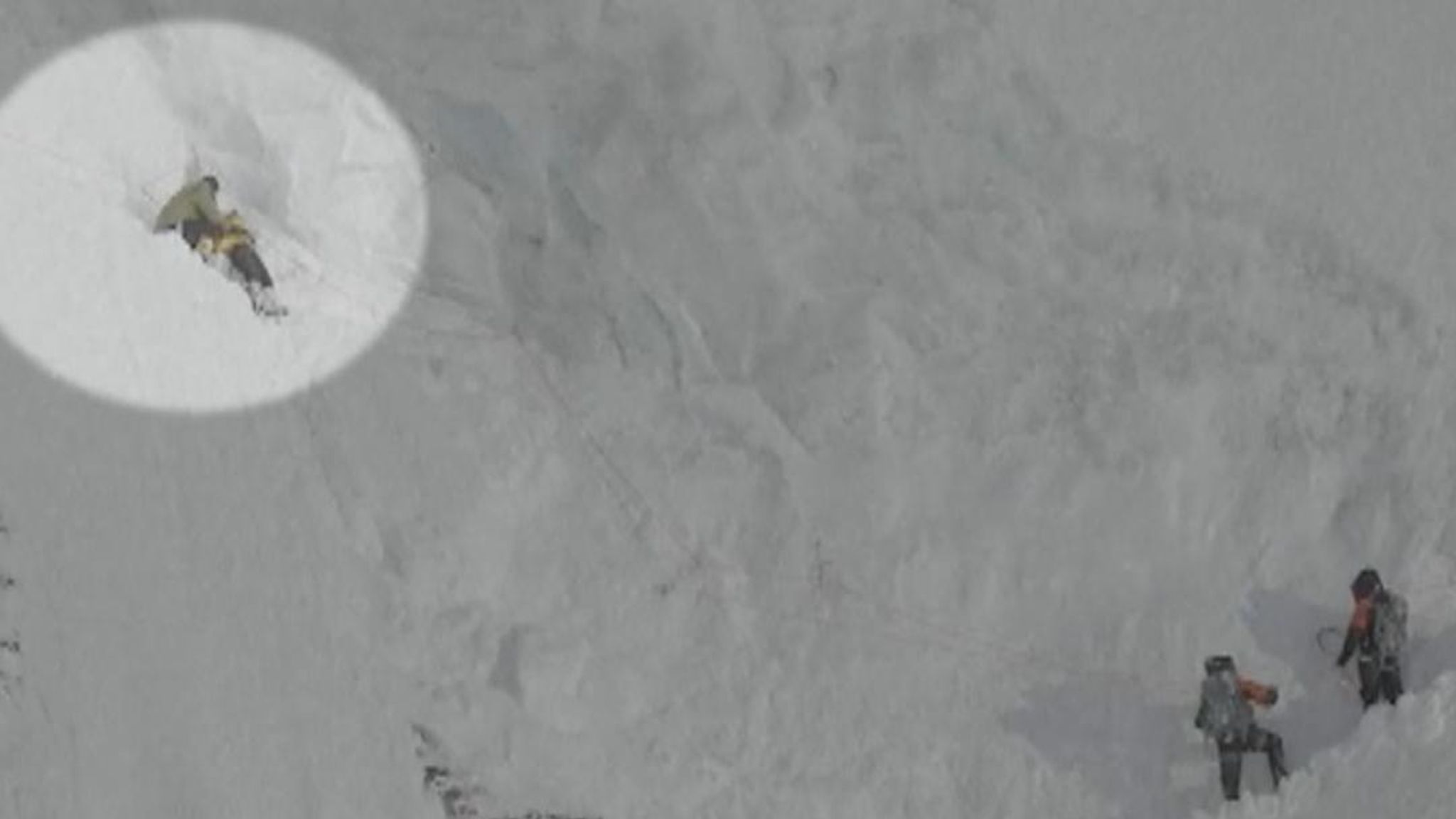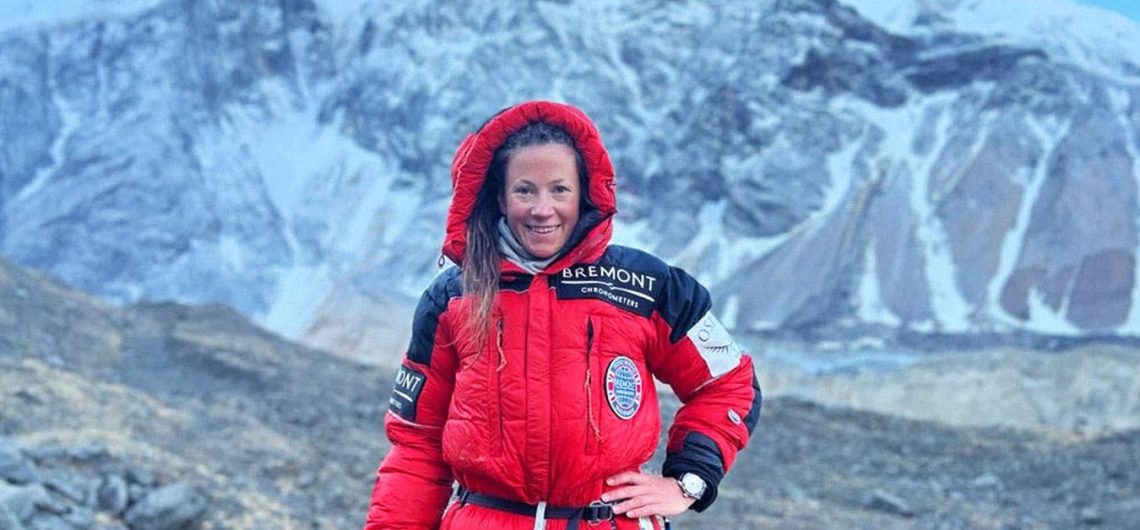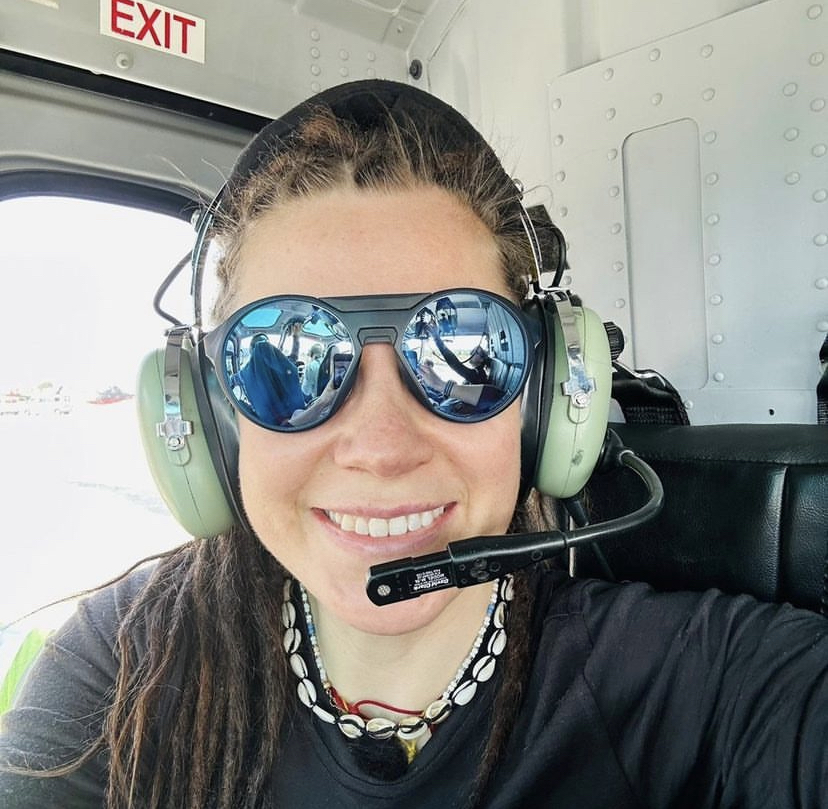Kristin Harila, a Norwegian lady has smashed the record to have climbed all 14 of the world’s highest mountains the quickest. She did it in three months and one day when she reached the peak of Mount K2 in Pakistan on July 27th, 2023, beating Nirmal “Nims” Purja’s previous record by three months and five days. This means that Harila beat Nimsdai’s record by 4 days.
Former professional skier Kristin Harila reached her final peak, K2 in Pakistan, the second-highest mountain in the world, less than four months after setting out to climb all 14 peaks above 8,000 meters.
Former professional skier Harila recently transitioned to mountaineering, while Tenjin has been working in the mountains since he was young. Harila participated in the Norwegian championships in 2006 as a cross-country skier, and achieved the 24th and 25th positions. She was a member of the club IL Polarstjernen.
In 2021, Harila reached her first 8,000-meter peak and later became determined to climb them all as quickly as possible. In 2022, she made an initial attempt but was only able to complete 12 peaks due to pandemic travel restrictions. The first climber to summit all 14 peaks was Reinhold Messner, accomplishing this feat over 16 years without supplemental oxygen.
The climb of Manaslu, the eighth-highest peak in the world at 8,163 meters, was criticized by renowned sherpa Mingma G for her team’s apparent significant dependence on helicopters to stock camps on the mountain before her successful ascension. Harila’s efforts, however, have not been without criticism. On her last peak, Osprey, one of her sponsors, announced her triumph.
According to a July, 27th, 2023, statement from Osprey, “Today at around 10.45 am Kristin and her committed climbing partner, Tenjin ‘Lama’ Sherpa, successfully summited K2 in Pakistan, and with that reached the summits of 14 mountains standing at 8,000 meters or higher in a phenomenal world record time of just three months and one day (92 days).”
“Kristin has established a new standard for climbing history with her astounding feat and cemented her position as a superb trailblazer in the industry. Her accomplishment acts as motivation for mountaineers and explorers all across the world by showing that incredible heights are achievable with perseverance and devotion.
“The partnership between Harila and Lama has shown the spirit of mountaineering togetherness, across boundaries and cultures to accomplish greatness together. As Kristin and Lama triumphantly return from this historic expedition, they thank all of their fans and the mountaineering community for their unfailing support and faith in their mission.
Bottled oxygen was utilized throughout Harila’s ascents, and sherpas provided assistance. How many of the peaks Tenjin Sherpa had ascended alongside Harila remained unknown.
Reinhold Messner, who is recognized as one of the best mountaineers in the world, was the first to complete the circle of 14 summits. It took him years to finish it. However, mountaineers have recently attempted to ascend all 14 summits in a single month, a challenge first accomplished by Purja in 2019.
However, there have lately been questions raised over how many climbers have genuinely finished the challenge, with ascents of Manaslu playing a significant role in the debate.
The genuine top of the mountain, which is a little further along the summit ridge and necessitates downclimbing and a potentially hazardous crossing through a brief portion of exposed snow slopes, is claimed by the majority of professionally led excursions on a forepeak a little below the true summit.
Eberhard Jurgalski, a scholar who spent ten years examining climbers who claimed the 14 peaks, asserted last year that only three people, not counting Messner, had reached the genuine summits of all the mountains. However, Jurgalski himself received criticism for a few mistakes in his list and for failing to get in touch with at least one well-known climber.
While Mingma G, who has his own high-mountain guiding business in Nepal, questioned Harila’s usage of helicopters on the same peak, her crew claimed that she had reached the genuine top of Manaslu. Mingma G criticized the strategies in an interview with ExplorersWeb conducted last month. ExplorersWeb has long advocated for greater openness in the claims made about polar and high mountain records.
“Last day’s footage is in this video. Rope, oxygen, and sherpas are being delivered by helicopter to Camp 2 on Manaslu. The path from camp 2 to camp 1 will be made open by them [the sherpas].
View this post on Instagram
In Nepal, a brand-new climbing paradigm is emerging. The situation was same on Annapurna as well. [Sherpas] descended at camp 3 and started opening down. I was shocked to learn that [Harila’s crew] summited Annapurna in one push, ascending from base camp to camp 3. I’m aware of the path and the snow,” Mingma G said on the website.
Three shuttles went to camp 2 and one went to camp 1, according to Harila’s crew, on Monday. Both the reputation of the sherpa and the image of the Himalaya will be damaged by this.
When questioned about the utilization of helicopters on Manaslu, Harila’s group justified the practice by asserting that it was growing more frequent.
Kristin simply flew to the basecamp. For many treks, flying equipment to higher camps is done.
The team stated that this was done to guarantee the safety of the sherpas.
Helicopter use in the Himalayas is becoming more prevalent, which has prompted criticism for its negative effects on the environment and the economic prospects of mountain populations.
In order to encourage the use of yaks and porters for traditional transportation during the spring of 2023 in the Khumbu region surrounding Everest, the local authorities temporarily limited plane service to Everest base camp.
Renowned climber and mountain guide Dawa Yangzum Sherpa from Nepal has also questioned the morality of utilizing helicopters. She criticized climbers “who take a helicopter to skip crossing the Khumbu icefall”—a perilous stretch of glaciated terrain near the base of Everest—in an interview with National Geographic magazine in 2019.
See also the first woman to climb Kilimanjaro
Who is Kristin Harila?
Kristin Harila, born on March 28, 1986, is a Norwegian mountaineer who has achieved multiple speed records for ascending all 14 eight-thousanders, the world’s peaks over 8,000 meters in elevation. In May 2021, she set the world record for the Fastest double-header of the Higher Eight-thousanders by a woman by climbing Mount Everest and Lhotse in under twelve hours. On May 22, 2022, she beat her own record by reaching the top of Mount Everest and then Lhotse in just nine hours and five minutes. Her previous success inspired her latest challenge, “Bremont 14 Peaks,” in which she aimed to become the first woman and second person overall to climb all 14 eight-thousanders in six months. Though she was only two peaks away from beating the record time, the Chinese authorities refusal of permits for Cho Oyu and Shishapangma ended her record hunt.
On May 3, 2023, Harila succeeded in reaching all 14 true geographic summits of the eight-thousanders within a year and five days, achieving a world record for the quickest true-summit ascent of the 8,000ers, regardless of gender. On July 27, 2023, Harila and her guide, Tenjen Sherpa from Seven Summit Treks, broke a new record by conquering all 14 true geographic summits in only 92 days. During this remarkable journey, they set multiple records, including completing 26 eight-thousander summits in just over a year, and setting the fastest Everest and Lhotse summits by a female, accomplishing them in merely eight hours. They utilized helicopters for transportation between base camps and relied on supplemental oxygen. Initially, Harila had planned to conquer the mountains without supplemental oxygen in 2023 but later had to use oxygen cylinders for safety. The total costs for her team in connection with her world record amounted to 15 million Norwegian kroner.
Controversy surrounding Harila’s achievement
She also utilized additional resources in a manner that stirred up debate, with opponents arguing that her team heavily depended on helicopters to transport equipment and sherpas. In recent times, the growing use of helicopters in the Himalayas has faced backlash due to concerns about the environment and the impact on employment in mountain communities. In defense, Harila’s team informed the Guardian that “Kristin only flew to base camp. The transportation of equipment to higher camps via helicopters is a common practice for many expeditions. This is done to safeguard the safety of sherpas.”
After their descent from K2, Harila and Tenjin arrived at Kathmandu airport to a warm welcome from hundreds of supporters, who greeted them with cheers and flower garlands, as reported by Binaj Gurubacharya of the Associated Press (AP). Harila reflected on their challenging experience, particularly on K2, where they faced very hard conditions and encountered very deep snow. She expressed that she does not have immediate plans to continue climbing such high peaks, mentioning that she has already tackled a total of 28 8,000-meter peaks and feels that she has done her part. Meanwhile, a documentary film about her record-breaking climbs is currently in production, as indicated on Harila’s website.
Upon reaching the final eight-thousand-meter peak, K2, a controversy arose regarding the death of a Pakistani high-altitude porter, 27-year-old Muhammad Hassan, while attempting a treacherous passage known as the Bottleneck. Hassan had been part of a rope-fixing team working in the Bottleneck, situated at an altitude of approximately 8,200 m (26,900 ft), despite not wearing a down suit or carrying supplemental oxygen. According to reports, Hassan fell from the pass around 2:15 am and was found tangled in his rope by another member of the team. Efforts were made to rescue him for 90 minutes, after which the team continued on to assist with an avalanche further up. A video that surfaced later showed climbers walking past Hassan as he lay injured, leading to accusations that the team had abandoned him to achieve their world record. These allegations were denied by the team leader, who described the release of the video as “insensitive”. However, local authorities cited poor weather conditions as the reason for the inability to mount a rescue mission. An investigation into Hassan’s death has been launched by tourism authorities in the region.
Norwegian mountaineer Kristin Harila denies group stepped over dying porter during world record K2 climb
While climbing K2, a member of a team ahead of them tragically slipped and later passed away on the mountain. Video footage has surfaced showing other climbers seemingly ignoring the fallen man, identified as a 27-year-old father of three named Muhammad Hassan from Pakistan. Two climbers who were on K2 that day have spoken out, accusing the group of mistreating Mr. Hassan and treating him as if he were lesser than them.
Ms. Harila recounted the desperate efforts of her team to save Mr. Hassan after he fell during their climb. Despite their attempts to bring him to safety, the treacherous conditions and narrow trails made it nearly impossible. The group ultimately had to split up, with some members continuing to the summit, while others stayed behind to help Mr. Hassan. After reaching the top, Ms. Harila was devastated to learn that he had passed away. She defended her decision to continue to the summit, expressing her anger at those who criticized the team’s actions and emphasizing the dangerous nature of the mountain. Unfortunately, they were unable to recover Mr. Hassan’s body due to the risky conditions. Ms. Harila expressed her condolences to his family and expressed a hope that others could learn from the tragic incident.
 German camera operator Philip Flaemig was present on K2 at the time and captured drone footage, but chose not to continue ascending the mountain due to the hazardous conditions. After reviewing the recorded footage at base camp, he observed numerous individuals walking over Mr. Hassan. Flaemig expressed shock at the lack of assistance provided to Hassan, stating that in his 35 years of mountaineering experience, he believed that it was feasible to help him. He cited numerous instances of individuals being aided at high altitudes and emphasized that the terrain where Hassan was found was only snow slopes, making it possible to bring him down. He condemned the behaviour as unjustifiable and criticized the lack of responsibility shown towards Hassan. Austrian mountaineer Wilhelm Steindl, who was also present that day but turned back due to the conditions, echoed similar sentiments, noting that such disregard for human life would be unthinkable in the Alps and lamenting the lack of prompt rescue efforts had Hassan been a Westerner.
German camera operator Philip Flaemig was present on K2 at the time and captured drone footage, but chose not to continue ascending the mountain due to the hazardous conditions. After reviewing the recorded footage at base camp, he observed numerous individuals walking over Mr. Hassan. Flaemig expressed shock at the lack of assistance provided to Hassan, stating that in his 35 years of mountaineering experience, he believed that it was feasible to help him. He cited numerous instances of individuals being aided at high altitudes and emphasized that the terrain where Hassan was found was only snow slopes, making it possible to bring him down. He condemned the behaviour as unjustifiable and criticized the lack of responsibility shown towards Hassan. Austrian mountaineer Wilhelm Steindl, who was also present that day but turned back due to the conditions, echoed similar sentiments, noting that such disregard for human life would be unthinkable in the Alps and lamenting the lack of prompt rescue efforts had Hassan been a Westerner.
- Nirmal Nims Purja MBE, a.k.a Nimsdai, King of the Mountains and EliteExped
- Fastest climber of 7 summits returns safely from Everest
- Antonina Samoilova, Ukrainian mountaineer sets 2 records in 1 day
- Fastest climbs of Mount Kilimanjaro on record featuring Karl Egloff, Simon Mtuy and Kílian Jornet
![]()




Comments